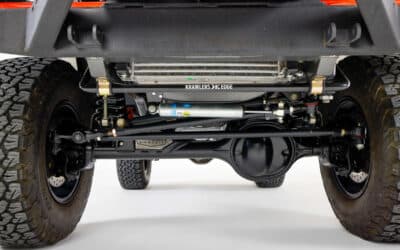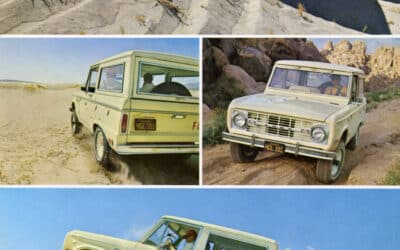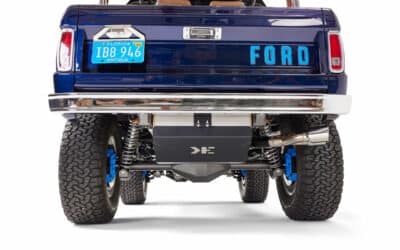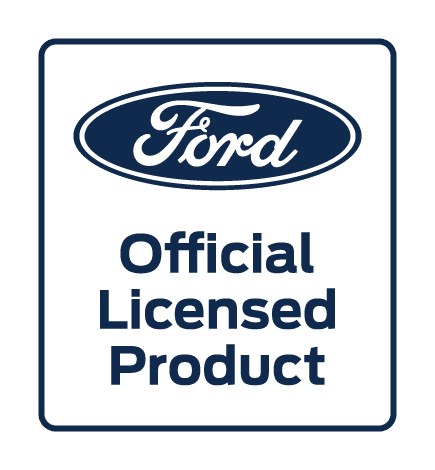There’s nothing like taking your early Ford Bronco off-road but can you drive your Ford Bronco on the beach? The feeling of the sand beneath your tires and the view of the ocean on the horizon – it’s an adventure that every Bronco owner dreams of.
But before you start your trip, it’s crucial to be prepared. At Kincer Chassis, we’re here to help you make your beach driving experience as smooth and fun as possible. So get ready, grab your gear and let’s talk about beach driving.
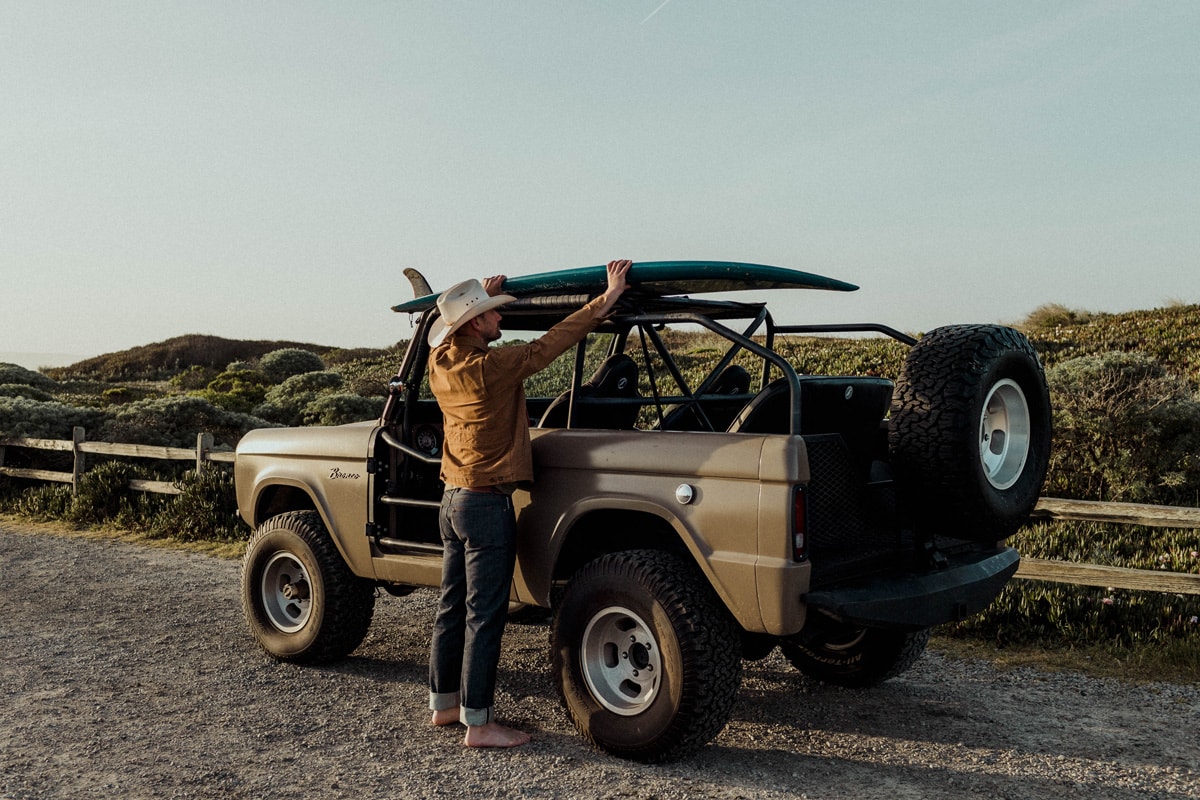
Photo Credit : WiesMade
Top 7 Tips for Driving Your Early Ford Bronco on the Beach
1. Check Beach Regulations and Obtain Necessary Permits
Before you head out, make sure that beach driving is permitted and find out the details on if you need any special permits. These details can usually be obtained from local government offices or websites.
2. Assess and Adjust Tire Pressure
For optimal sand traction, reduce your tire pressure. We recommend a range of 12 to 15 psi. Lower pressure expands the tire’s footprint, providing better grip and control on the soft surface by allowing the tires to spread out over the sand, increasing traction and preventing sinking.
Remember to reinflate your tires once you return to the pavement.
3. Engage the Right Drive Mode
Switch to 4WD Low if you’re driving on particularly soft or loose sand. This provides better torque and control.
Engaging four-wheel drive when driving on sand distributes power equally to all four wheels, providing better traction and reducing the risk of getting bogged down.
4. Maintain a Steady Speed
Avoid sudden accelerations or stops. Aim for a steady speed, as this helps you maintain momentum, crucial for driving in sand.
Excessive speed can lead to loss of control, especially on uneven surfaces. Aim for a moderate, consistent speed that keeps you moving without causing unnecessary strain on your Bronco.
5. Keep an Eye on the Terrain
Watch out for changes in sand color, which can indicate differences in consistency. Darker patches usually mean wetter, more compact sand, which is easier to drive on.
A beach can vary from hard-packed sand near the water’s edge to soft and loose further inland. Always assess the terrain before you start driving. Harder sand provides better traction and is easier to drive on, while softer sand can increase the risk of getting stuck.
6. Follow Existing Tracks
If you spot tire tracks, use them. They’re likely to be the path of least resistance, making it easier to maintain momentum.
7. Know Your Exit Strategy
Before you get too far down the beach, have a plan for turning around or exiting the beach. Always be aware of the tides as they can impact your ability to leave the beach safely.

Essential Gear for Beach Driving
Apart from the driving tips, it’s essential to carry the right gear. This includes traction boards, a shovel, and recovery gear and accessories like tow straps, winches, and recovery tracks. You should also have a tire pressure gauge, a portable air compressor, and basic tools for vehicle repair.
And don’t forget your cell phone. It’s still one of the most important pieces of gear to have with you when you’re going on an adventure. An iPhone isn’t just for taking pictures and creating memories but this device can save you from being stranded if your recovery options don’t work!
Optional Equipment and Accessories to Help Others Who Are Stuck in The Sand
- Extra tow straps: Useful for pulling other vehicles
- A high-lift jack: For more complicated recovery tasks
- Snatch block: To change the direction of your pull or double the force
Bring Extra Gas in Premium Fuel Containers
It’s always smart to bring extra fuel with you when go on any adventure. The RotopaX is a 1 gallon roto-molded gas can that is leak-proof and durable. It comes with what they call a “sure-seal gasket” that guarantees your spout won’t leak or vibrate loose.
You can also upgrade your Bronco with our 23-Gallon Stainless Steel Gas Tank for the Classic Bronco.
Choosing the Right Tires for Sand Driving
When it comes to tires, wider is better for sand driving. Look for tires with a large footprint and low-pressure capabilities. All-terrain or mud-terrain tires are typically good choices.
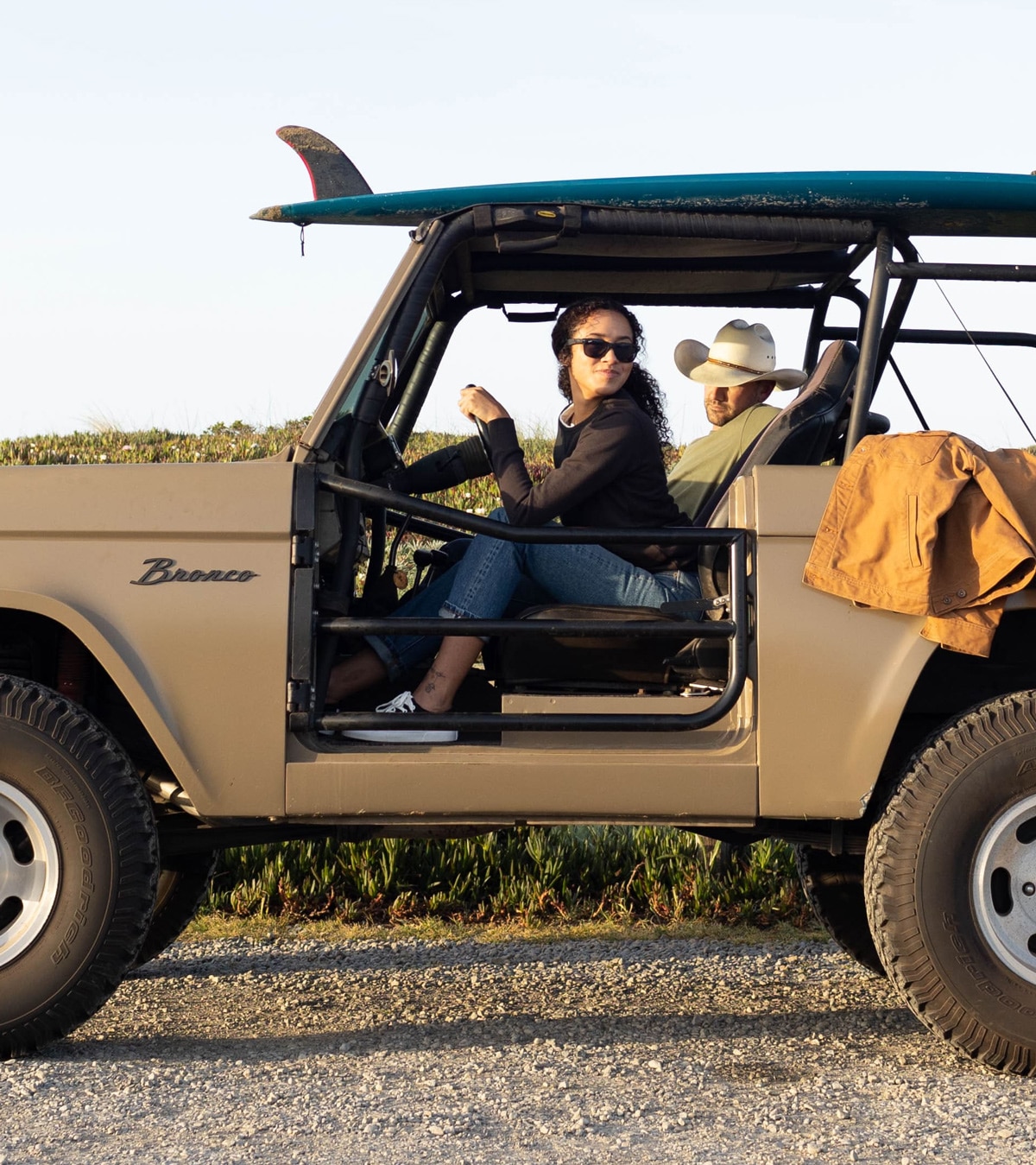
Photo Credit : WiesMade
How Sand Type Impacts Your Bronco Beach Driving Performance
Hard-Packed Sand
Hard-packed sand is typically found closer to the water’s edge, where the tide regularly compresses it. This type of sand provides better traction for your Bronco, making it easier to drive on. The firm surface minimizes tire sinking and allows for smoother acceleration and braking, much like driving on a regular road. However, it’s crucial to remember that tides change, and what was once a hard-packed driving surface can quickly become submerged.
Soft Sand
Further away from the water’s edge, you’ll encounter softer, looser sand. This type of sand presents a more significant challenge for beach driving. Due to its loose nature, soft sand can cause your Bronco’s tires to sink, leading to potential difficulties in maintaining momentum and increasing the risk of getting stuck. When driving on soft sand, lower your tire pressure to increase the tire’s footprint and improve traction. Additionally, maintaining a steady speed and avoiding abrupt stops or sharp turns can help prevent your Bronco from bogging down.
Wet Sand
Wet sand often provides a middle ground between hard-packed and soft sand. It’s usually firmer than dry, fluffy sand, but not as compact as hard-packed sand. The moisture in wet sand creates a certain level of cohesion that can improve traction for your Bronco, making it somewhat easier to navigate. However, be cautious of overly wet sand or areas where water is pooling, as these can be deceptively soft and potentially hazardous.
Dry, Fluffy Sand
Dry, fluffy sand is perhaps the most challenging type of sand to drive on. It offers minimal traction and can easily lead to your Bronco sinking or becoming stuck. When faced with sections of dry, fluffy sand, it’s crucial to keep a steady momentum. Any abrupt changes in speed or direction can cause the tires to dig into the sand further, increasing the likelihood of getting stuck.
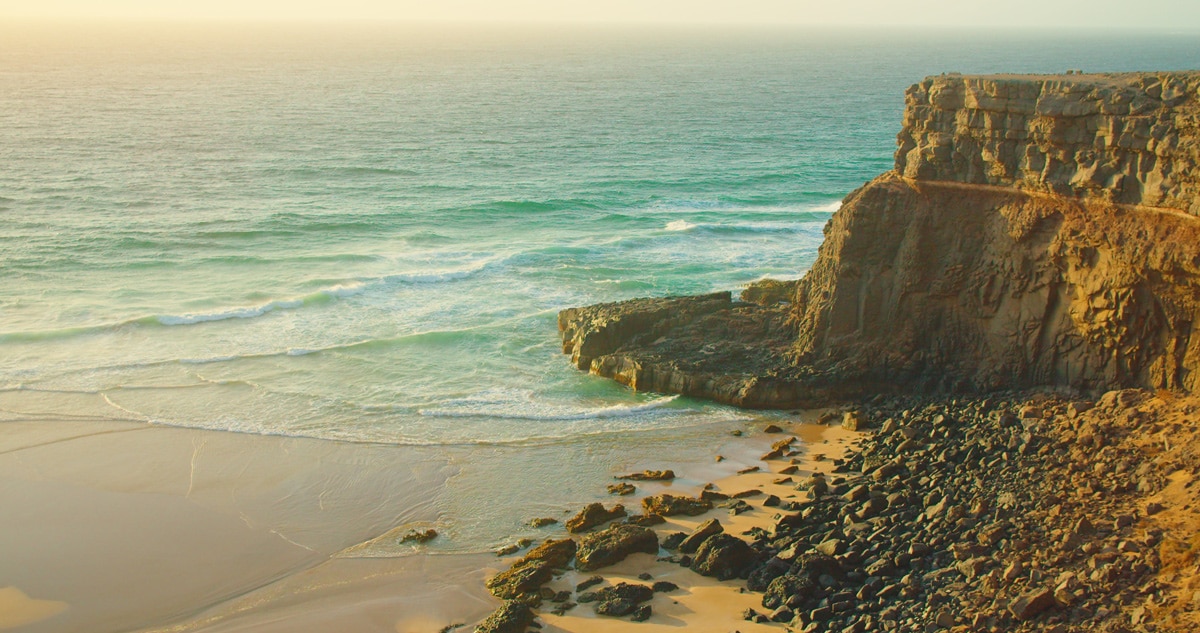
Watch the Tide
Don’t park too close to the water, especially if you plan on staying for a while. Tides can change quickly, and you don’t want your Bronco caught in the rising water.
Stay Clear of Dunes and Vegetation
Driving on dunes or vegetation is not only illegal in many areas, it can also damage your vehicle and the environment. Stick to designated driving areas.
Can you drive in the ocean?
No, it is not safe or recommended to drive in the ocean. Vehicles are not designed to operate in salt water, which can cause severe damage to the engine, electronics, and body of the vehicle due to corrosion.
Additionally, the currents and tides in the ocean can easily sweep a vehicle away, which can be extremely dangerous for the occupants. Always stick to designated driving areas when at the beach and avoid driving close to the water’s edge, especially during high tide.
Stuck in Sand and You’ve Tried all Your Options – Call for Help:
If you can’t free the vehicle yourself and you’ve tried every way you know how – it’s time to call for help. This could be a friend or family member with a suitable vehicle for a tow, or professional roadside assistance. Your choice, but understand it can get expensive if you have to choose to call the pros!
It’s a good idea to have the professional’s number saved just in case you absolutely need it in case you get stuck. This could be a local tow company. These services typically have the necessary equipment and expertise to safely free your vehicle without causing damage and knowledge on how to do it.
The good news is, you’re not the first person to get stuck in the sand at the beach.
Conclusion
Understanding the effects of different sand types on your Ford Bronco’s driving performance is essential for a successful beach outing. By adjusting your driving techniques and preparing your vehicle accordingly, you can navigate beach driving with confidence and ease.
Remember these tips, respect the beach rules, and always prioritize safety over excitement.

